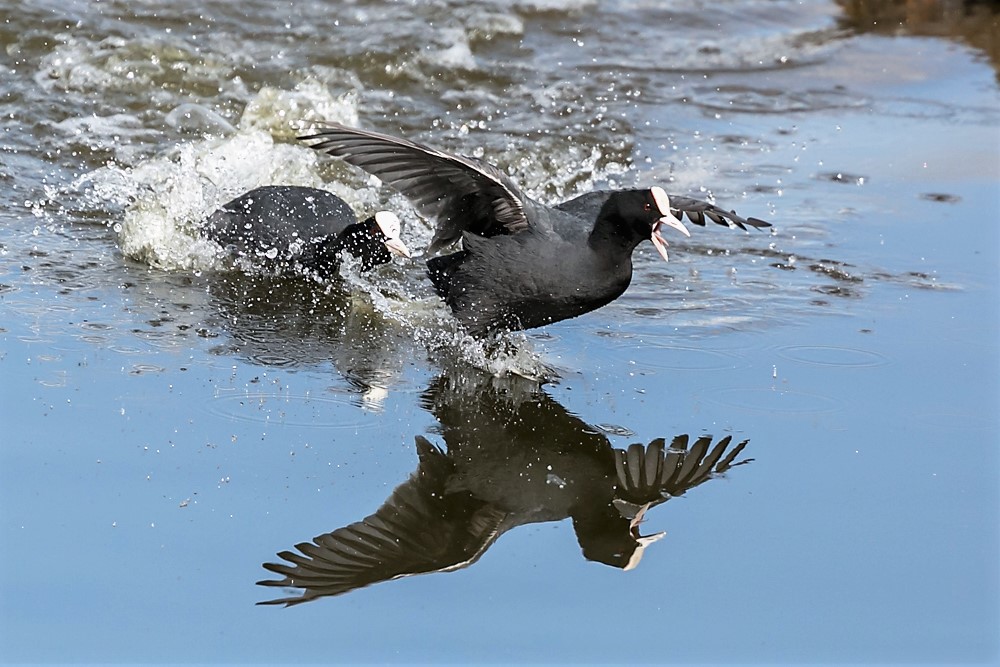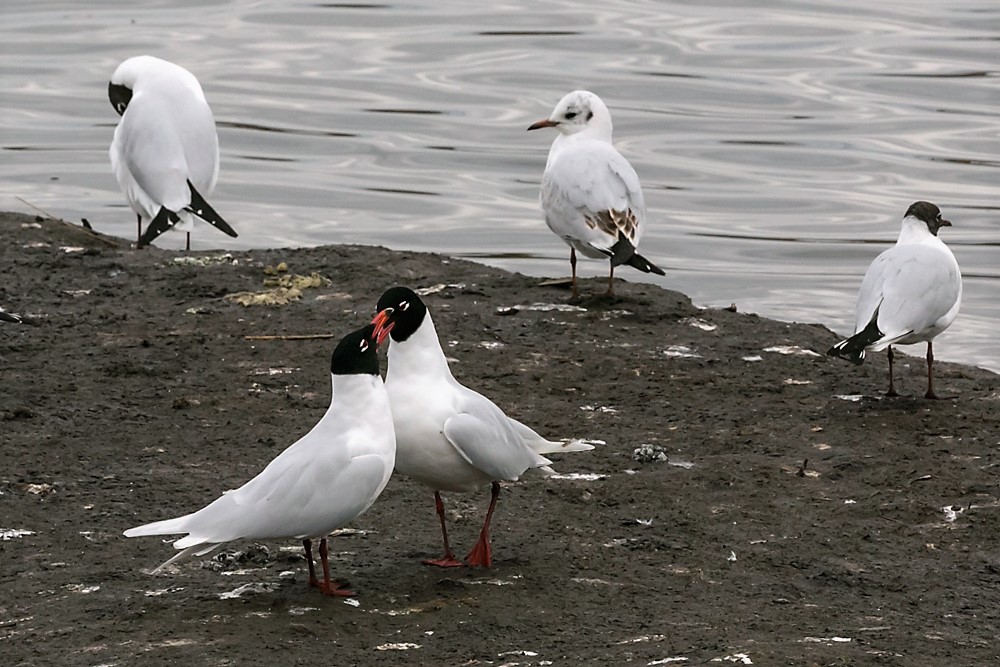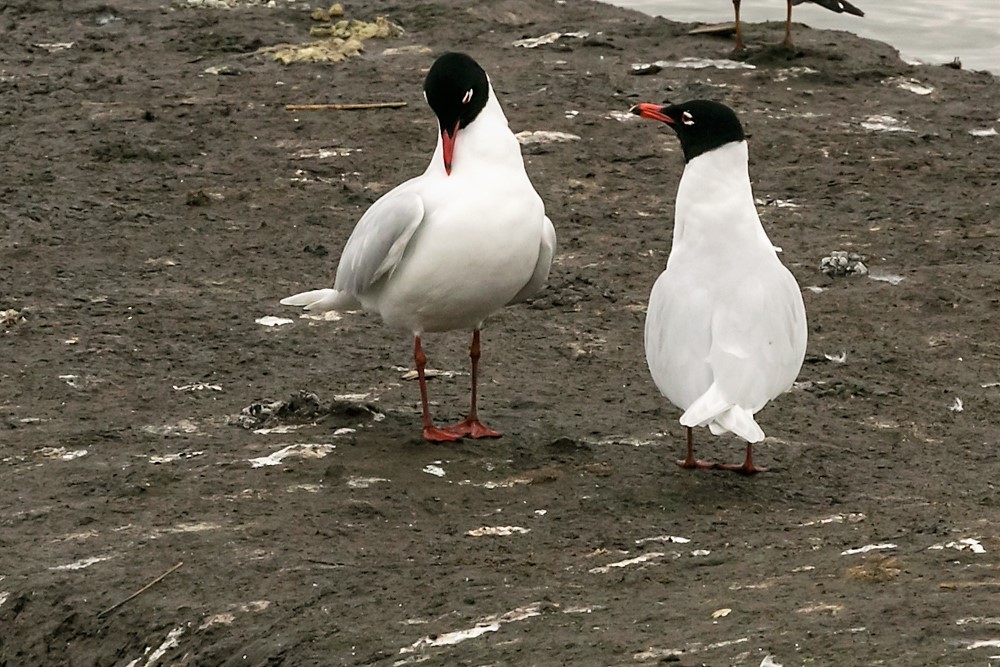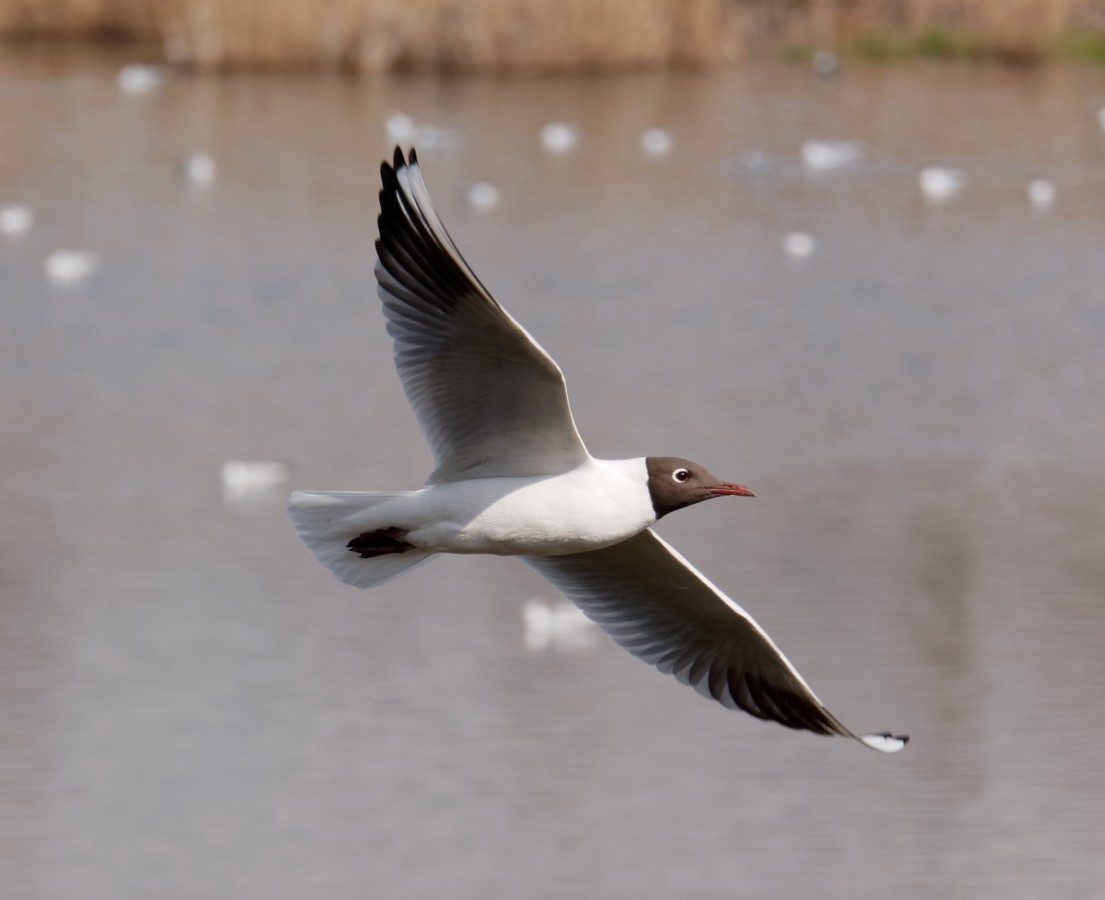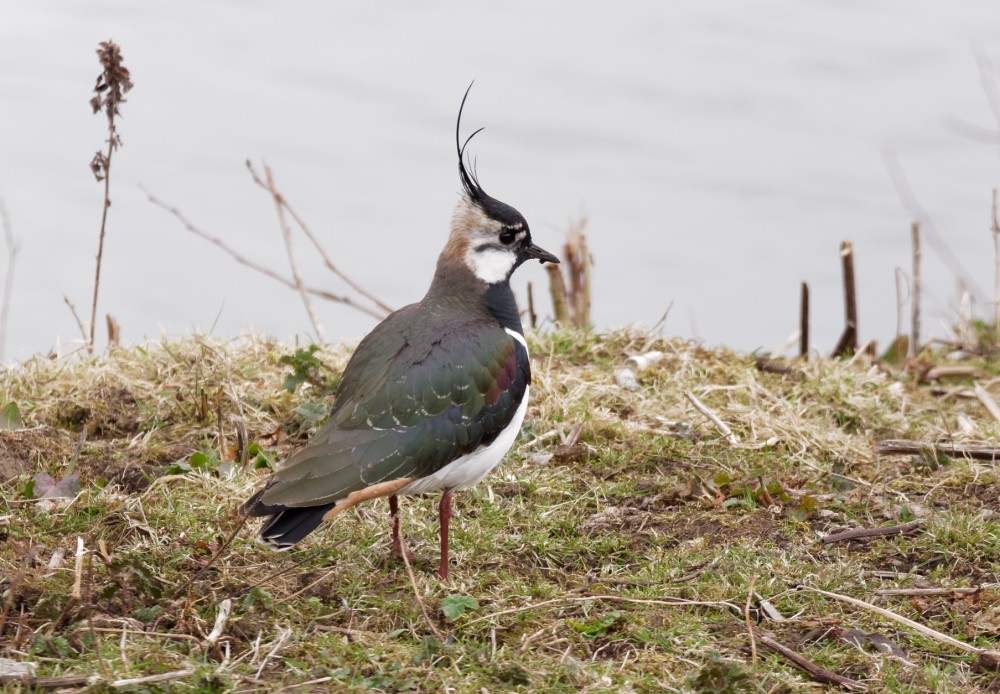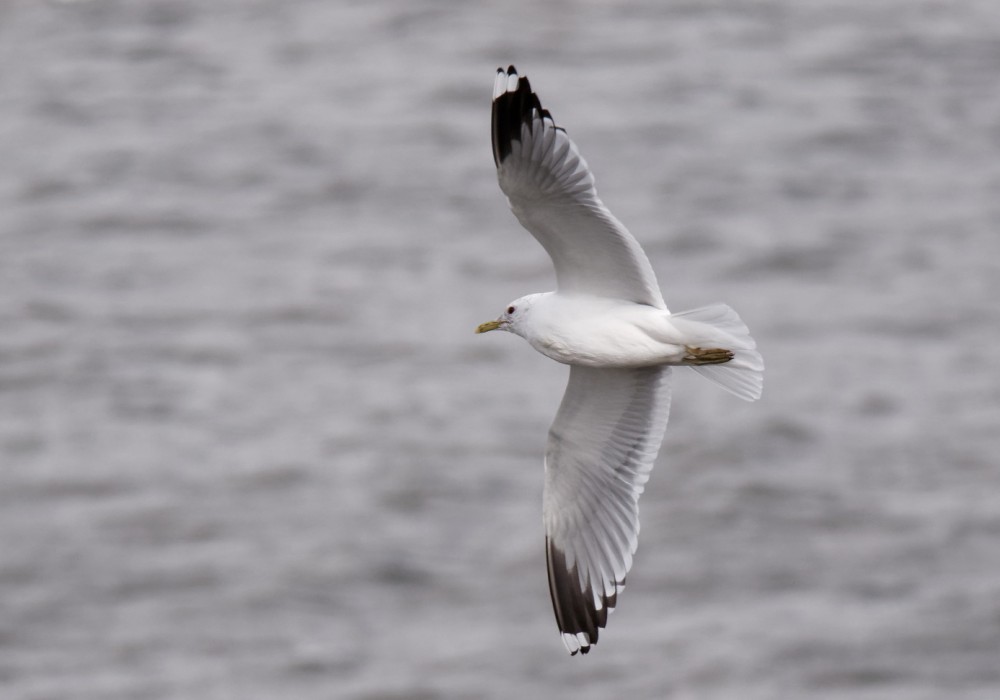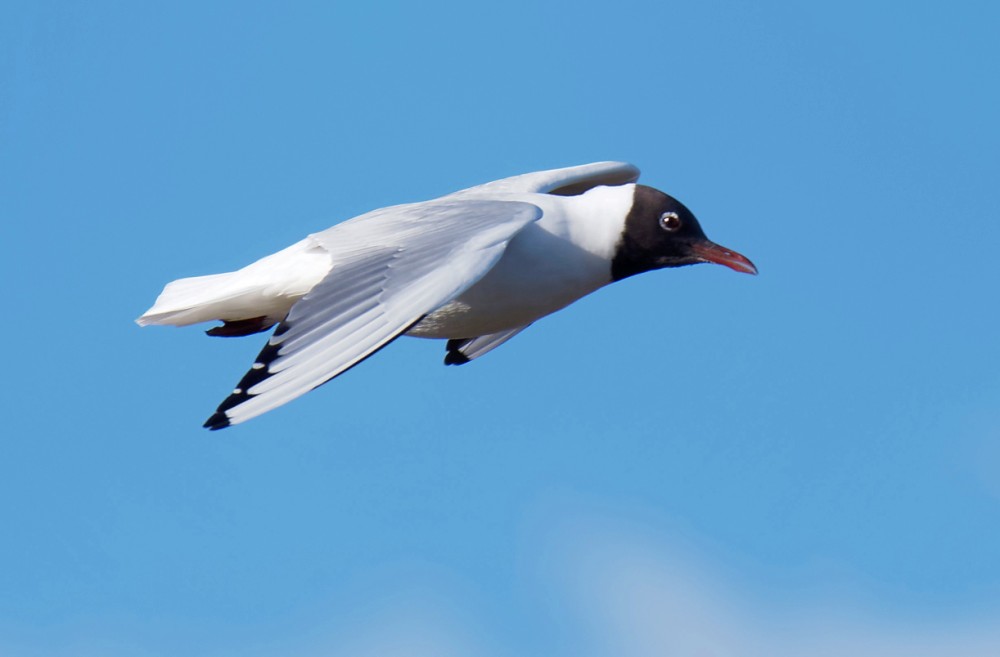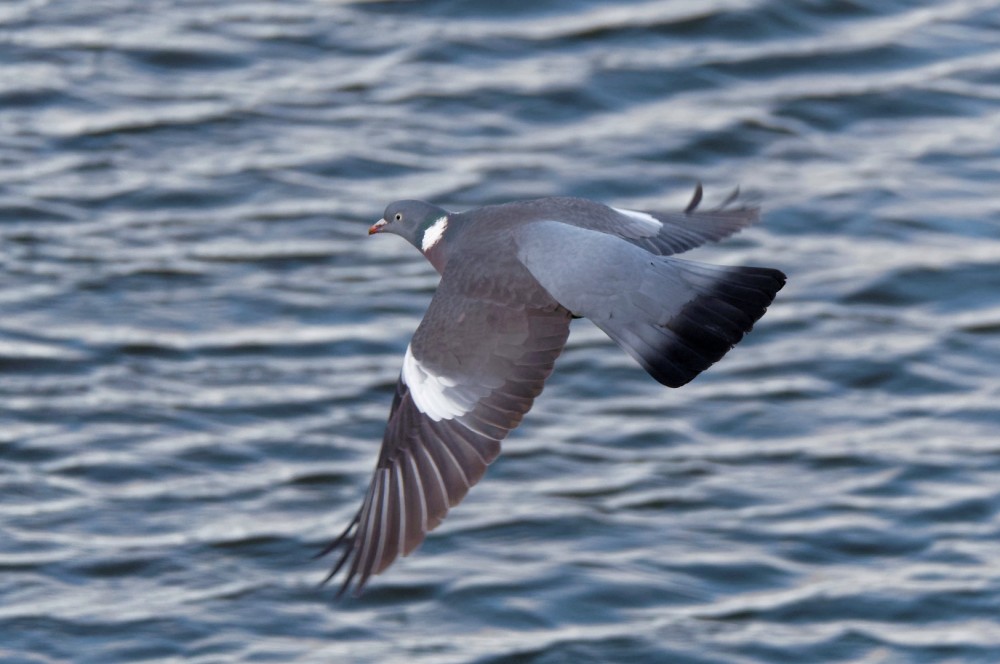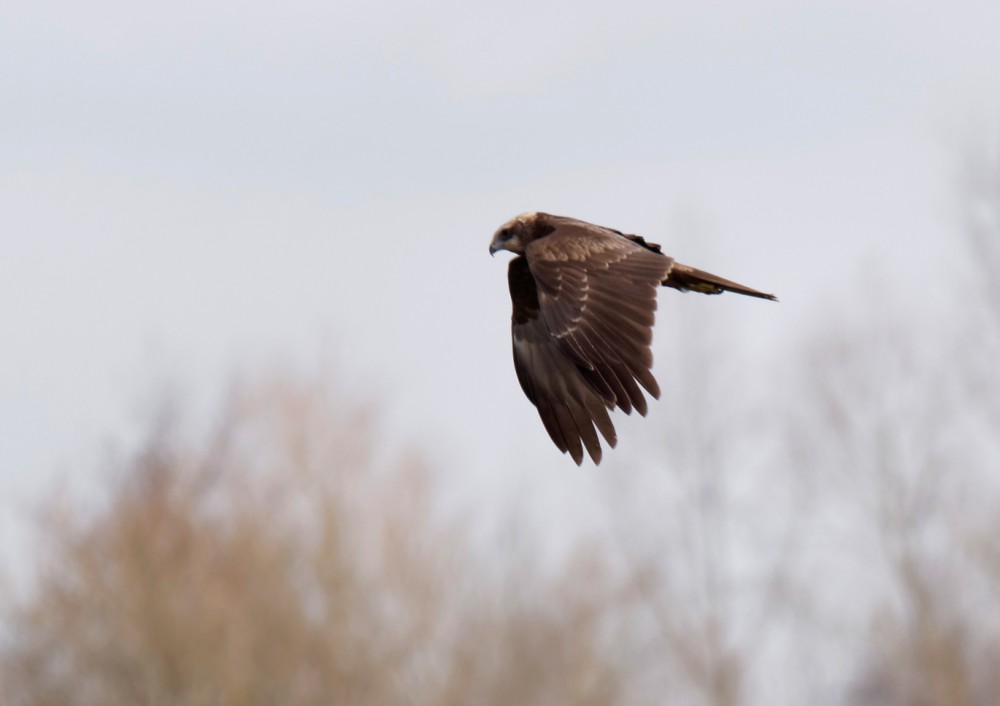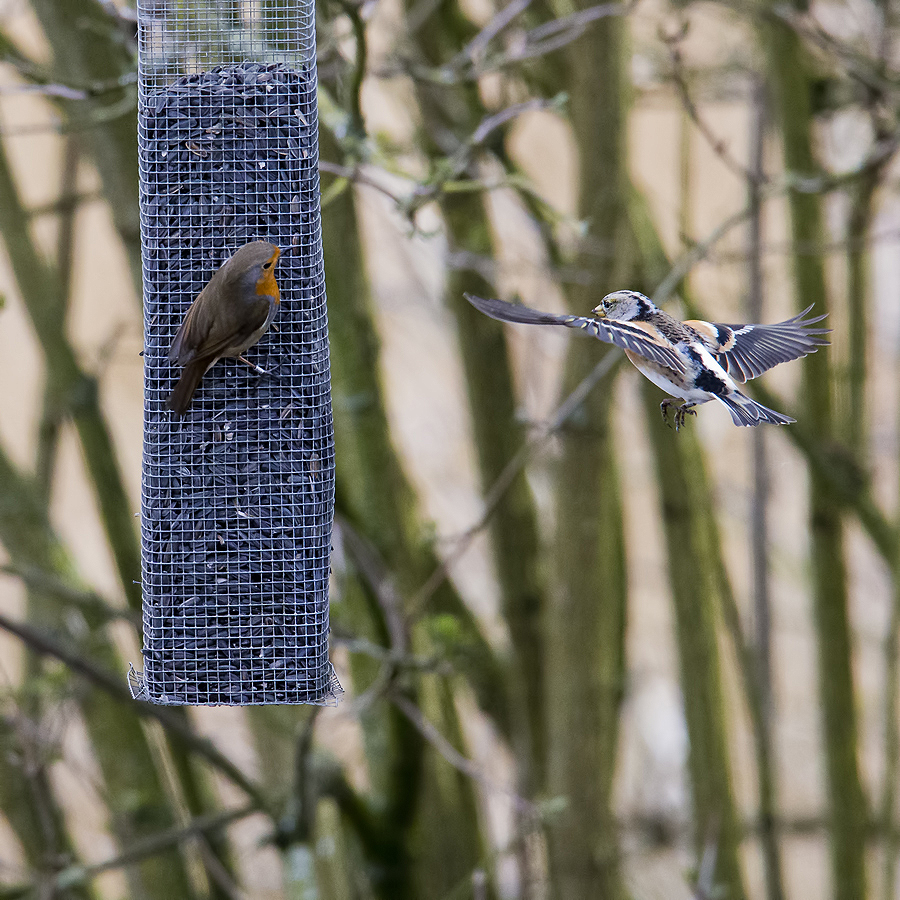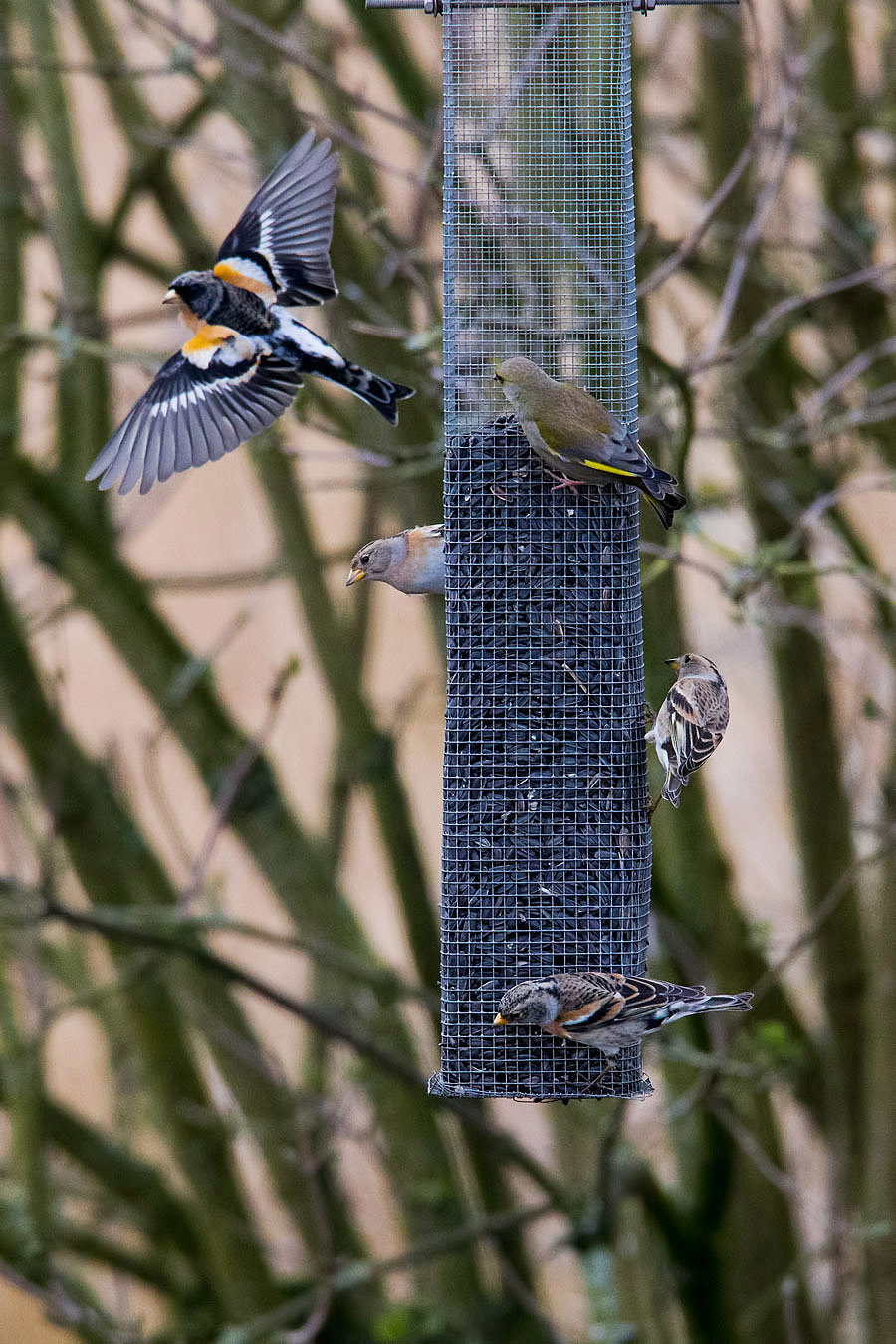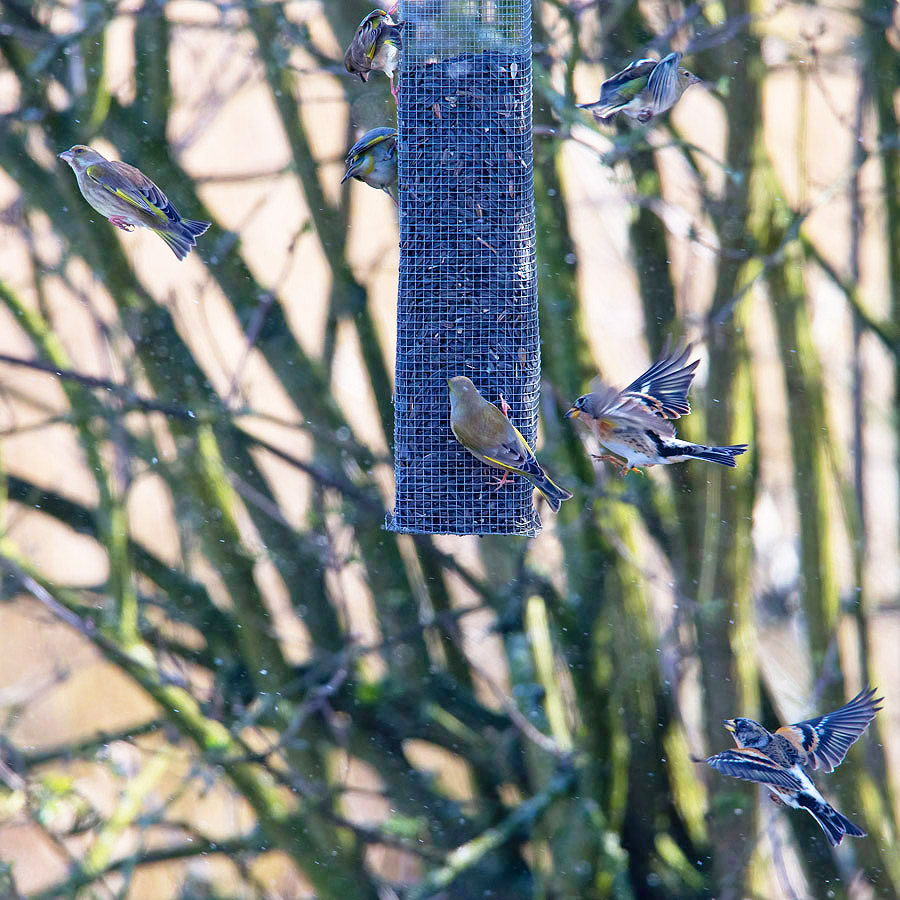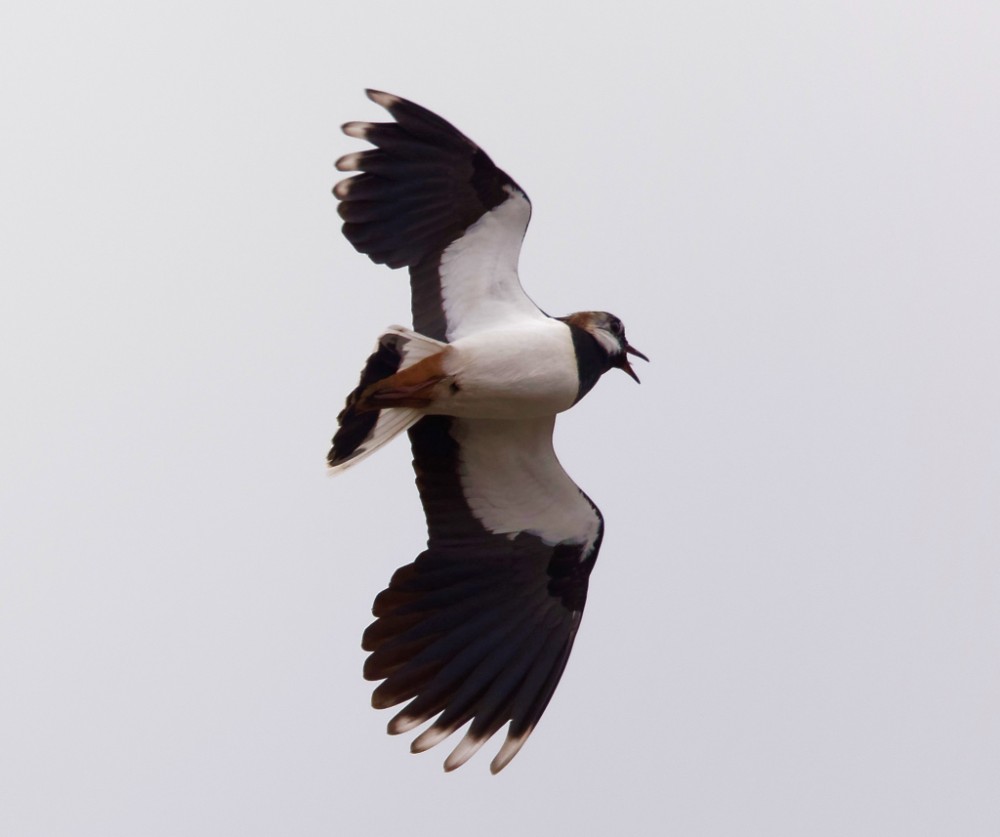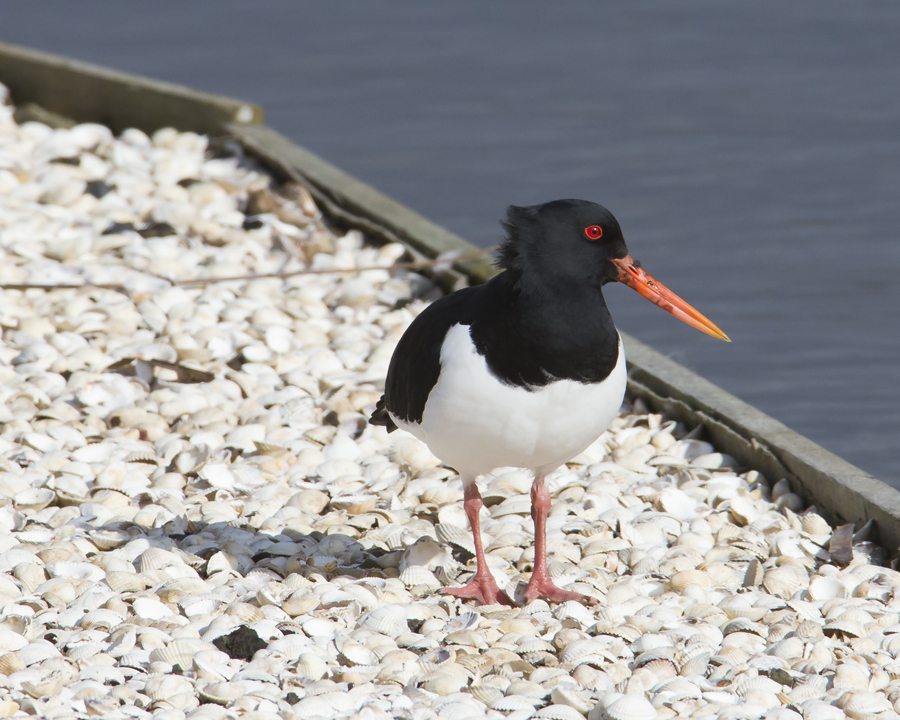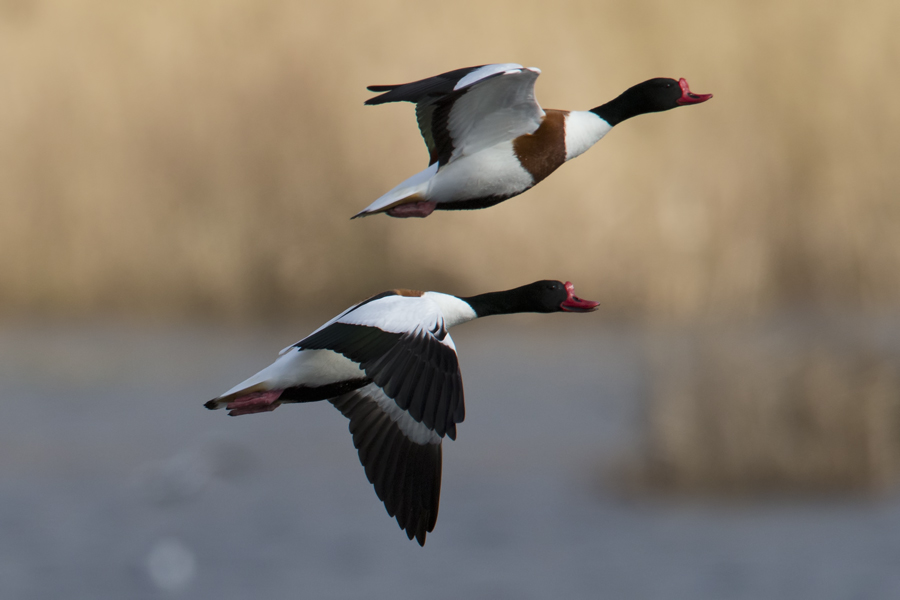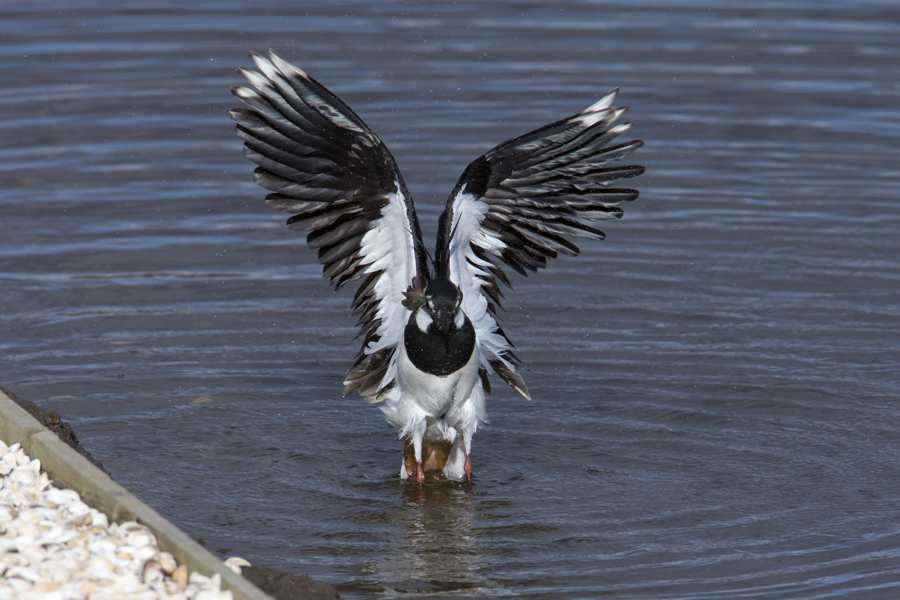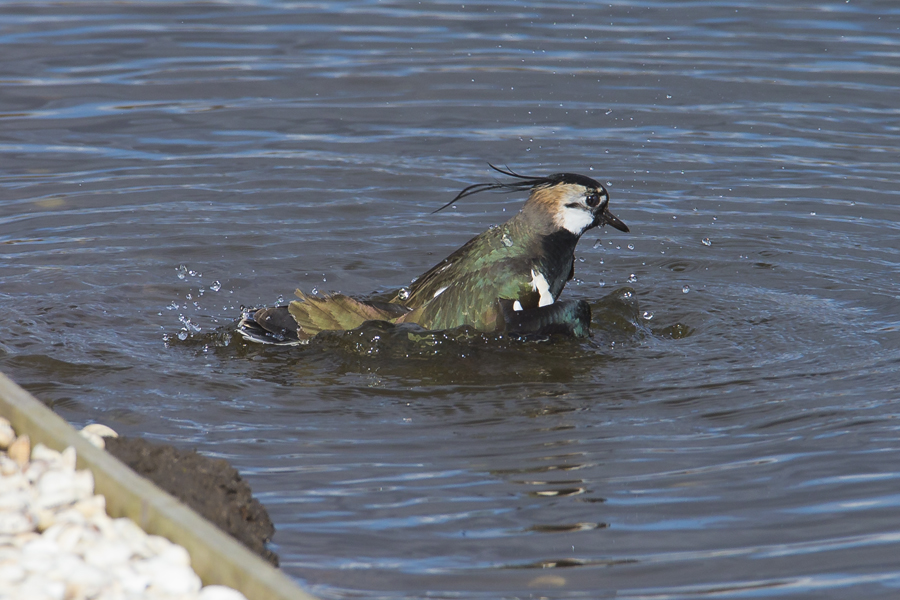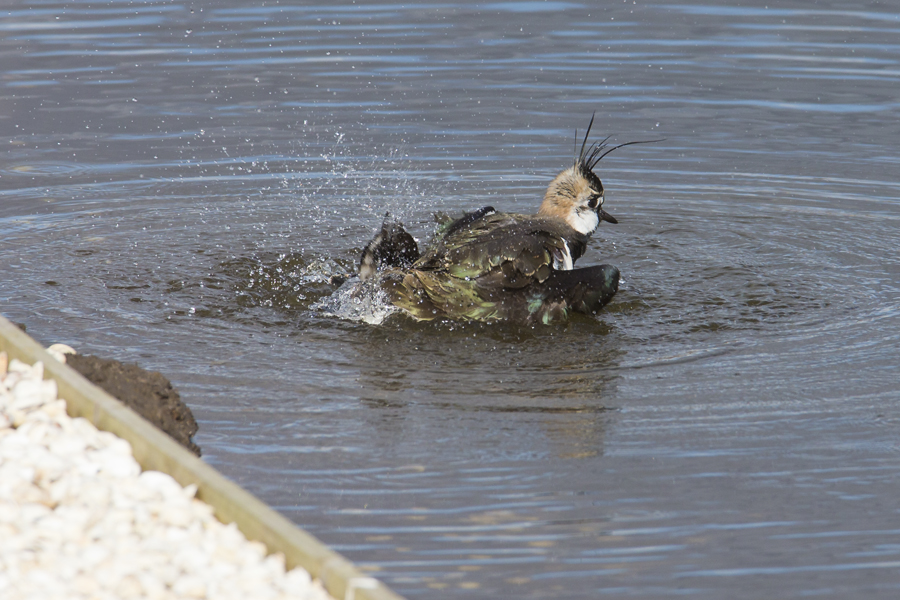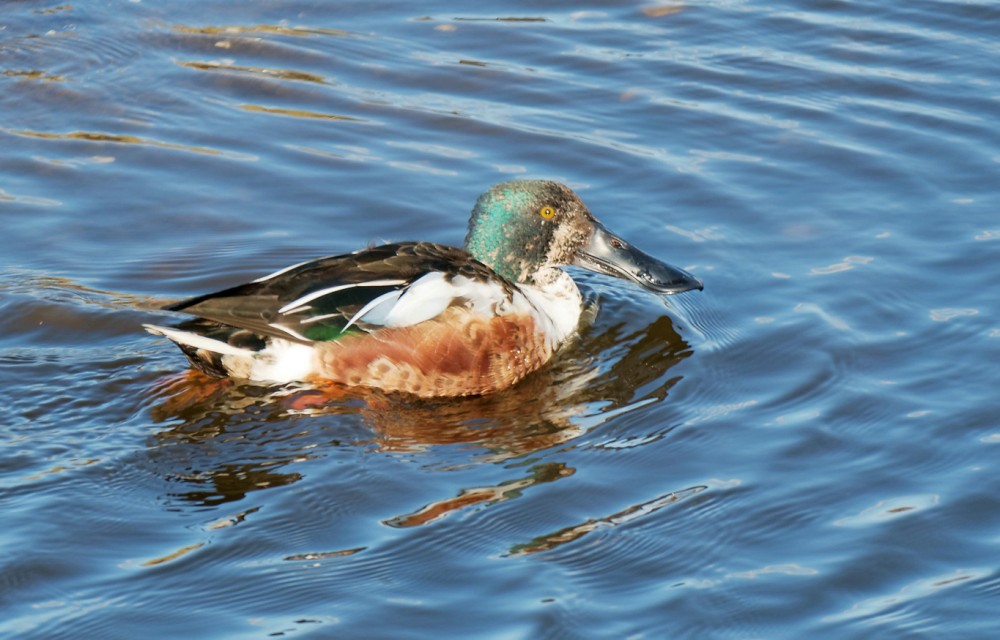Woolston Eyes Monthly Sightings
2018-03-31
A really good morning’s birding today, despite the chilly northerly which was blowing. We started with breakfast at dawn in the Morgan Hide, followed by a breeding bird survey of No.1 bed and then back to the Morgan Hide to look for migrants. The circuit of No.1 bed turned up a Little Ringed Plover, a drake Goosander, 12 Chiffchaffs, a Water Rail and the female Peregrine at the Viaduct nest sight. No.3 bed also delivered some excellent sightings, with a Marsh Harrier, three Black-necked Grebes, four Sand Martins, a Lesser Spotted Woodpecker, 15 Bramblings, two more Chiffchaffs, a Cetti’s Warbler and a Mediterranean Gull.
Cheers David Bowman (with David Spencer, Helen Wynn, Dave Steel, Alan Warford, Brian Baird and Les Jones)
Submitted by: David Bowman
2018-03-30
6 Mediterranean gulls this afternoon, 3 on the scrape in front of the John Morgan hide and 3 others a little further out on the pool
Submitted by: Hazel Rothwell
2018-03-30
Nice record from No.3 bed this morning, where three Avocets dropped in, initially found by Bert Lloyd and John Verdon, stayed for an hour or so and then headed west. Avocets are a very scarce visitor to the Reserve but, with increased breeding numbers at local coastal sites, will hopefully become more common in the future.
Photo of this morning’s Avocets
Cheers David Bowman (with David Spencer, Bert Lloyd and John Verdon)
Submitted by: David Bowman
2018-03-29
A frosty early start for my first common bird survey of the year on No.4 bed. A total of 12 Chiffchaff on the bed was evidence of an arrival over the past 24 hours as only 3 were found on the 28th. Nine singing male Song Thrush was a good count as was a total of 26 Robins in song. A Raven flew over and a Lesser Redpoll was unexpected. Also on the 28th were 15 Sand Martins, a minimum of three Mediterranean Gulls and an Oystercatcher (all No.3 bed). A Cetti’s Warbler was again singing in the fields to the north of No.2 bed. Wildfowl totals included 307 Tufted Duck and 62 Pochard. At last there have been reports of the first butterflies of the season with 2 Brimstones on No.3 bed (25th March) and sightings of Small Tortoiseshell form the 23rd.
Submitted by: Dave Hackett
2018-03-27
This time of year is absorbing, as thousands of birds start settling down to breed and others stop over on their migration northwards. Although the weather was cool, with the odd shower, three Sand Martins struggled through from their West African wintering grounds. The seven adult Mediterranean Gulls, which dropped into the Black-headed Gull colony, were likely to have come a shorter distance and we remain hopeful that some will stay to breed for the first time. It was also nice to see 45 Redwings and a few Bramblings, birds which winter here and will soon be heading off to breed in Scandinavia. The link is to a video clip which shows the pair of Black=necked Grebes mating.
Click here to watch David’s video or cut and paste the link below into your browser…
https://www.youtube.com/watch?v=zv82IbsqBF4
Cheers David (with Alan Warford and David Spencer)
Submitted by: David Bowman
2018-03-26
After a busy morning I managed to get down to No.3 bed this afternoon for a few hours. Although the winds were not particularly conducive to migration, they were light and warm and I thought we might get the odd Sand Martin making its way northwards. Constant scanning was eventually rewarded when a soaring Osprey appeared, away to the east, was mobbed briefly by passing Lesser Black-backed Gulls and then headed off to the north. Additionally, a single 2nd summer Mediterranean Gull was among the 1,400 Black-headed Gulls at the colony and a few Bramblings were still visiting the Morgan Hide feeders.
Photo of a Black-headed Gull from this afternoon.
Cheers David Bowman
Submitted by: David Bowman
2018-03-24
It felt as if spring had really started to arrive on No.3 bed this morning. Although a single Black-necked Grebe, not fully in breeding plumage, had been seen on several prior dates, it was still a surprise to see a newly-arrived pair, in pristine summer plumage, building a nest and mating repeatedly on it in front of the Morgan Hide. Normally, when the grebes first arrive they spend a few days pairing and courting before slipping out of sight in the reeds to mate, so this was an unusual observation. Then the Marsh Harrier, which has been around for a few days, put in an appearance before flying west, probably due to the constant harassment by the 1,500 Black-headed Gulls which dominate the bed. We later caught up with this on the Loop of No.4 bed, where it was looking settled in the reed bed, before we eventually headed back to No.3 bed. Back in the Morgan Hide for lunch, three adult Mediterranean Gulls were picked out among the massed Black-headed Gulls and 30 Bramblings were under the feeders. A pair of Oystercatchers then arrived, displaying and mating on the Morgan Hide scrape to the consternation of the local male Lapwing, which spent the whole morning unsuccessfully trying to entice passing females to stay. Photo of a displaying Lapwing Cheers David Bowman (with David Spencer, Alan Warford, Helen Wynn, Kelly Ainsworth and Les Jones)
Submitted by: David Bowman
2018-03-23
A dawn start on No.3 bed was rewarded when a single Black-necked Grebe came out of the reeds and spent the rest of the morning patrolling the bed, looking for a mate. Spring passage is relatively late this year, due to adverse weather but hopefully we should soon be seeing plenty more arriving.
Photo of a Common Gull from this morning.
Cheers David Bowman (with David Spencer, Bert Lloyd and John Verdon)
Submitted by: David Bowman
2018-03-21
The highlights of today’s walk were some excellent wildfowl totals, including 525 Tufted Duck, 42 Gadwall, 45 Mute Swan, 61 Coot and 67 Pochard. Of 15 Great-crested Grebes most were paired up, as were the Swans with signs of nesting observed. On the viaduct were the resident Peregrines and a possible third bird although I was not certain of this! A Cetti’s Warbler was heard in the flooded fields to the north of No.2 bed where possible breeding took place last year. A Water Rail was seen briefly on No.3 bed. Some spring flowers were in bloom with Primroses on No.3 bed and a good display of Winter Aconites in the wood to the north of the river opposite Butchersfield Tip.
Submitted by: Dave Hackett
2018-03-21
Despite the calm, crisp start to the morning, the forecast of freshening northerlies meant that we would probably have to work hard to find any migrant birds. Most are currently being held back by the adverse weather, though I did fancy finding the odd raptor struggling through. Sure enough, mid-morning brought in a Marsh Harrier, which came in from the south-east and hunted actively all morning, constantly flushing the gulls and wildfowl. It was then quicker to spot a second arriving Marsh Harrier, over the east bank of No.3 bed, than I was and they soared together for a while before the second bird carried on northwards. Out on the water, 320 Teal, 90 Shoveler and 450 Black-headed Gulls were the main sources of interest, with Brambling numbers under the Morgan Hide feeders building to 30 or so by lunchtime. The Tawny Owl, which has taken up residence in one of the Kestrel boxes, was still looking well-settled and walking off the bed, a Chiffchaff was singing from the south bank, with another three reported from Nos.1 and 2 beds.
Photo of one of the Marsh Harriers
Cheers David Bowman (with Alan Warford and David Spencer)
Submitted by: David Bowman
2018-03-17
Just before the snow came again a flurry of action at the bird feeder! Brambling.
Submitted by: John Bradford
2018-03-17
A bracing morning with an icy easterly wind bringing a mix of horizontal snow showers and bright sunshine. As it was Webs Count day, we started in the Morgan Hide on No.3 bed before walking as far as Bollin Point to count the wildfowl and other water birds. Highlights of the morning were: 2 Sand Martins, 3 Pintails and 72 Shovelers on No.3 bed, a drake Goldeneye on the Weir Pool, the resident pair of Peregrines at their Viaduct nest site, a Water Rail walking beside the track on No.1 bed, 33 Fieldfares around Butchersfield Tip, a Woodcock on No.2 bed with another two on No.3 bed and, finally, in a snow storm, 50 Bramblings under the Morgan Hide feeders.
Photo of a displaying Lapwing from No.3 bed
Cheers David Bowman (with Dave Spencer, Alan Warford, Brian Martin, Helen Wynn, George Dunbar, Brian Baird)
Submitted by: David Bowman
2018-03-16
There have been no further sightings of the Black-necked Grebe but a pair of adult summer Mediterranean Gulls joined the Black-headed Gulls today. Earlier in the week a Goosander was on the Ship Canal by the car park (13th) and a Blackcap was singing on No.1 bed (14th).
Submitted by: David Spencer
2018-03-13
The first Black-necked Grebe of the year was found on No.3 bed this morning. Originally in front of the John Morgan Hide it later moved to the north-west pool where it showed well from the Rotary Hide. The first Chiffchaff was heard singing in the copse whist a Kingfisher flew west along the canal. A pair of Grey Wagtails was at the Locks and a third on the canal at the Old pumping Station.
Submitted by: Dave Hackett
2018-03-07
In contrast to last week there were signs of spring today. A number of birds were displaying including pairs of Buzzard, Mute Swan and Lapwing, the latter on No.3 bed. A Canada Goose and a Greylag appeared to have paired up on the Loop of No.4 bed. A Snipe was flushed on No.1 bed, an Oystercatcher was in front of the John Morgan Hide whilst large numbers of wildfowl on the Loop of No.4 bed including 119 Gadwall attracted the attention of a Marsh Harrier. Many common birds were in song including about 50 Robins, 15 Dunnock and 14 Song Thrush. Wildfowl totals of note were 101 Mallard, 35 Mute Swan, 438 Tufted Duck, 66 Coot, 13 Great-crested Grebe, 136 Gadwall, 85 Canada Geese, 16 Shelduck, 32 Pochard and 50 Shoveler. On the path leading to the Frank Linley hide were a number of Scarlet Elf Cup fungi.
Submitted by: Dave Hackett
2018-03-03
Although the strength of the east wind had lessened, it was still a chilly start at 6.45 am today. A quick breakfast in the Morgan Hide was followed by a pleasant wander down to Bollin Point, then around No.2 bed to count the wildfowl at the Weir Basin, before returning to No.3 bed. Collective highlights from the day included: the Marsh Harrier back on No.3 bed; 2 Woodcocks flushed on No.3 bed; the breeding pair of Peregrines looking well ensconced on Thelwall Viaduct; 3 Willow Tits; 1 drake Goldeneye, 100 Coot, 85 Shovelers, 265 Tufted Ducks, 11 Pochard, 11 Shelducks, 31 Gadwall, 1 Little Grebe and 7 Great Crested Grebes across the whole Reserve; 2 Sparrowhawks including one which nearly caught a Teal, which only escaped by plunge diving into the No.3 bed lagoon; 4 Common Buzzards plus a handful each of Goldcrests, Redwings, Bramblings and Filedfares. Photo of a Shoveler
Cheers David (with David Spencer, Helen Wynn, Alan Warford, Sue Haddock, Brian Baird, Dave Steel, Les Jones, Brian Martin and Darren Lloyd)
Submitted by: David Bowman
2018-03-01
Although today was the first day of the meteorological spring it certainly did not feel that way with a midday temperature of -3C plus windchill!! Nevertheless there was as always plenty of interest and some good wildfowl totals. I flushed a Woodcock on No.1 bed, had close up views of a Goldcrest on No.2 bed and finally caught up with the Marsh Harrier on the Loop of No.4 bed. Wildfowl totals included 93 Mallard, 587 Tufted Duck, 91 Coot, 67 Shoveler and 30 Pochard. A male Goldeneye was at the Weir Basin. The feeders at the John Morgan Hide were attracting excellent numbers of hungry birds including 50 Brambling, about 100 Chaffinch and Greenfinch, 3 Bullfinch, 5 Stock Doves and up to 20 Coot!
Submitted by: Dave Hackett

